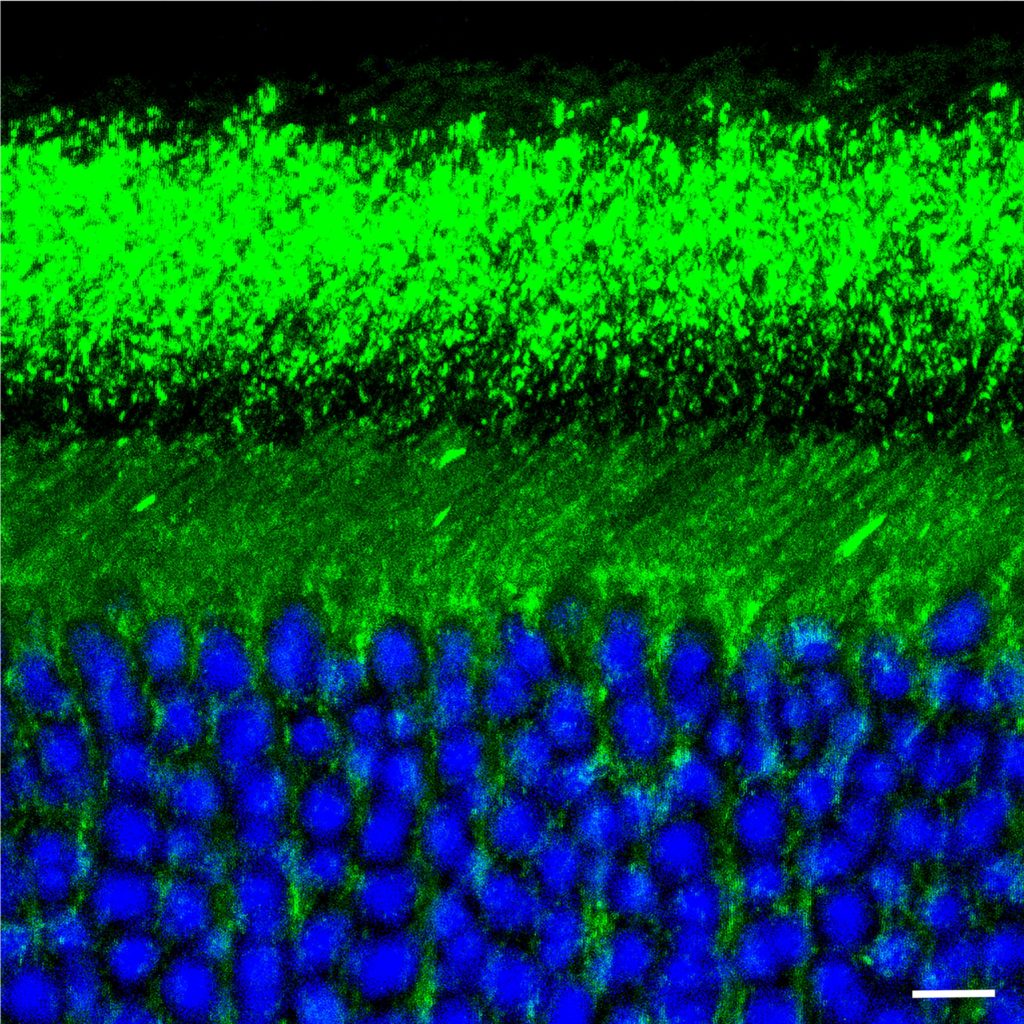Light-sensitivity or the capacity to respond to light of retinal photoreceptor cells, known as rods and cones, is highly dependent on the intracellular levels of the cGMP molecule. Understanding the enzymatic steps that produce and degrade cGMP and their regulation by light is of the outmost importance to understand the first steps in seeing and how our visual system constantly adjusts to the widely varying light intensities of the natural world.
The group of Dr. Ana Mendez, at the Bellvitge Biomedical Research Institute (IDIBELL) and the Faculty of Medicine and Health Sciences of the University of Barcelona (UB), has undertaken a comprehensive study led by Anna Plana-Bonamaisó to deepen our understanding of cGMP metabolism in the retina and its regulation by background light. The focus of the study, published in the journal eLife, is the enzyme IMPDH1, required for the production of GTP, which is the substrate for cGMP synthesis.
The study reveals that the activity of IMPDH1 in vivo is regulated by light in a layered manner, to adjust GTP production to cGMP demand. IMPDH1 activity in vivo is sensitive to inhibition by GTP, through a GTP-binding domain. The study shows that light induces a phosphorylation event that prevents GTP binding and inhibition, increasing enzyme activity. This increase in enzyme activity with light exposure was confirmed by in vivo metabolic flux analysis, and happened as the protein relocated in the cell towards the place of cGMP consumption. This increase in enzymatic activity served to sustain the GTP levels upon light exposure; which are required to keep up with the increased cGMP consumption. Under physiological conditions, this regulation increases IMPDH1 activity as a function of ambient light intensity, contributing to adapt the operation of photoreceptor cells to the lighting conditions.
An aspect of great interest is that blindness-associated mutations in IMPDH1 are located precisely in this regulatory domain, which suggests that these mutations would alter the regulatory mechanism, leading to unabated activation of the enzyme. This work predicts that in IMPDH1-associated forms of blindness the retinal neurodegeneration would be caused by an abnormal increase in the levels of cGMP, and foresees considering the use of specific inhibitors of IMPDH1 as potential therapies for these patients.

